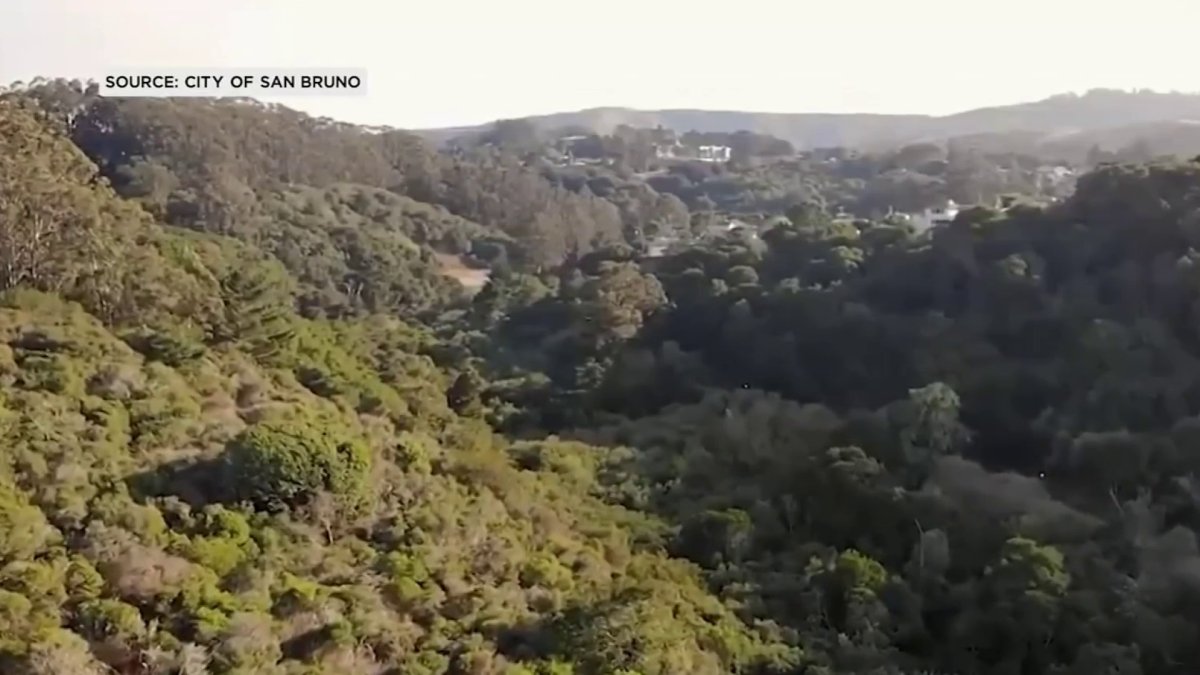
For the last few months, state crews have been hard at work clearing brush from the rim of a 76-acre canyon in San Bruno.
Their goal is to protect the dozens of homes that ring Crestmoor Canyon from the threat of an explosive wildfire – a threat that looms larger every year in this overgrown urban oasis.
“There’s been no significant fires in this canyon in modern times, in the last 30, 40 years,” said San Bruno Fire Chief Ari Delay. The challenge, he says, is both expensive and daunting, and just the first phase is expected to take a full year to complete.
The project is using state crews with the California Conservation Corps. But that was only possible, Delay says, because of the $3 million PG&E put up as part of its criminal probation in the 2010 San Bruno gas explosion. That blast destroyed 38 homes and came dangerously close to engulfing the canyon.
“It’s been a Godsend,” Delay said of the court ordered funding. “It really makes a significant impact on the residents here.”
Cesar Ramirez, who heads one of the crews, says the work is not easy.
“It works right in conjunction with our motto, which is: hard work, low pay and miserable conditions,” he said. “Everything that gets cut we have to drag out of here, it needs to get chipped. In some of these places, being that we working on a canyon, sometimes we have to find ways to get the brush out of here.”
California
The idea is to carve out a 100 foot buffer zone between the homes and the forest, to give firefighters an area they can use to defend the structures. The $600,000 effort is expected to take the two dozen corps workers a total of 48 days to finish, over the course of a year.
But even after they get that done - the threat remains from the dangerously overgrown interior of the canyon. Chief Delay says the state restricts what can be done there and that could mean it could take decades to develop a full fire protection plan.
“A slew of environmental reviews have to take place to determine what net effect the project will have on the canyon itself,” Delay said, adding that the only thing allowed right now under the state law is to clear the brush within 100 feet of the homes.
The challenge is so daunting that one 40-year U.S. Forest service veteran says cutting won’t be enough.
At the time he retired in 2008, Steve Eubanks, was in charge of the entire Tahoe National Forest in the Northern Sierra. He says his mission now is to organize a summit of leaders around an ambitious plan to thin or burn 500,000 acres of the Sierra forest a year.
The state’s current plan is to partner with the forest service to target 500,000 federal acres statewide, starting in 2025.
“We’re not going to stop fires completely,” Eubanks said, “what we’re going to do is stop large scale, high intensity fires.”
Besides staving off megafires, Eubanks says his plan would pump $2 billion in federal money annually into the local economy. Much of that money will be used to reopen shuttered lumber mills and restart biomass plants to turn all the wood chips into energy.
He said the impacts of thinning, as envisioned by his plan, will be far less than the devastation wrought by the high intensity wildfire.
Reopening those lumber related businesses, he said, is the key to the large scale treatment necessary to make a dent in the wildfire challenge.
“All I can tell you if we have many more fire seasons like we had [last year], it’s going to be a moot point,” he said. “We’re losing far more forests than we can afford to lose.”
EDITOR'S NOTE: A previous version of this story misidentified the California Conservation Corps.